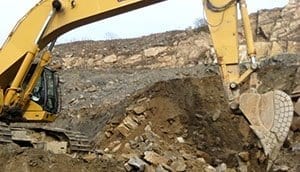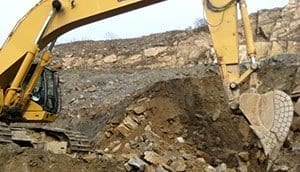(There’s nothing like funding to make the sale. Here’s to all the mining and construction equipment companies dusting off their marekting plans and getting to work.)
From Mark S. Kuhar, Editor-in-Chief of Rock Products, Cement Americas and Frac Sand Insider at Mining Media International post on LinkedIn Dec 9, 2016.
 “Democrats and Republicans came together to pass a transportation bill that will help us build on America’s progress by growing our economy and creating more good jobs for our middle class,” Obama stated just prior to putting his signature on the bill. “This bill is not perfect, but it is a commonsense compromise, and an important first step in the right direction. I look forward to signing this bill right away, so that we can put Americans to work rebuilding our crumbling roads, bridges and transit systems, reauthorize the Export-Import Bank that helps our companies compete around the world, and give local and state governments and employers the certainty they need to invest and hire for the long term.”
“Democrats and Republicans came together to pass a transportation bill that will help us build on America’s progress by growing our economy and creating more good jobs for our middle class,” Obama stated just prior to putting his signature on the bill. “This bill is not perfect, but it is a commonsense compromise, and an important first step in the right direction. I look forward to signing this bill right away, so that we can put Americans to work rebuilding our crumbling roads, bridges and transit systems, reauthorize the Export-Import Bank that helps our companies compete around the world, and give local and state governments and employers the certainty they need to invest and hire for the long term.”
Aggregates producers are pleased with the bill, and look forward to the industry growth it is sure to generate.
“The wide, bipartisan margin of victory for the FAST Act reassures all of us of the support for federal investment in this nation’s roads and bridges,” said J. Thomas Hill, president and CEO of Vulcan Materials Co. He told Rock Products, “Over the past several years, we engaged our employees, leveraged our trade associations, and spent a lot of time on Capitol Hill advocating for increased funding and long-term highway program stability. The FAST Act represents a major victory for the nation, the entire industry, and Vulcan.”
Martin Marietta Chairman, President and CEO Ward Nye told Rock Products the long-term investment is long overdue. “All Americans should celebrate the passage of the FAST Act,” he said. “It will not only improve our country’s global competitiveness, but also our safety and way of life. Infrastructure in the United States has desperately needed this type of long-term investment for nearly a decade. At Martin Marietta, we are excited about the positive and enduring role we can play in providing the quality materials needed as states advance new multi-year infrastructure projects resulting from this important legislation.”
For Summit Materials, the shortfalls of the bill are evident, but the development is positive. “For the first time in more than a decade, there is a reliable commitment to funding the Highway Trust Fund over a multi-year period,” the company’s CEO, Tom Hill, told Rock Products. “Although a great first step, the bill does not provide adequate appropriation levels to make a dent in the condition of our roads and bridges. In addition, we still do not have a long-term solution to address funding shortfalls beyond 2019. Again, this bill is a very positive development but the industry still has lots of work to do.”
National Stone, Sand and Gravel Association Chairman Charles S. Luck IV, president and CEO of Luck Companies, said, “This critical bill gives state and federal governments the funding certainty essential for informed infrastructure investment. Our industry is ready to get to work and help improve the condition, efficiency and safety of America’s roads, highways and bridges. We commend members of Congress for seeing the value of a robust infrastructure to foster economic growth, maintain our global competitiveness and improve the quality of life for Americans.”
Although the FAST Act has become law, there are still some issues that have to be addressed up the road, chief among them, convincing a skeptical Congress that increasing gas taxes is in the long term, the most practical way to shore up the Highway Trust Fund for the future.
Secretary of Transportation Anthony Foxx noted that the battle is not over. “The good news is that the long winter of uncertainty for state DOTs has come to an end,” he said. “The FAST Act also takes the important step of increasing funding. Under the Act, funding will go up by roughly 11 percent over five years. This is a down-payment for building a 21st century transportation system, though it is still far short of the amount needed to reduce congestion on our roads and meet the increasing demands on our transportation systems.”




